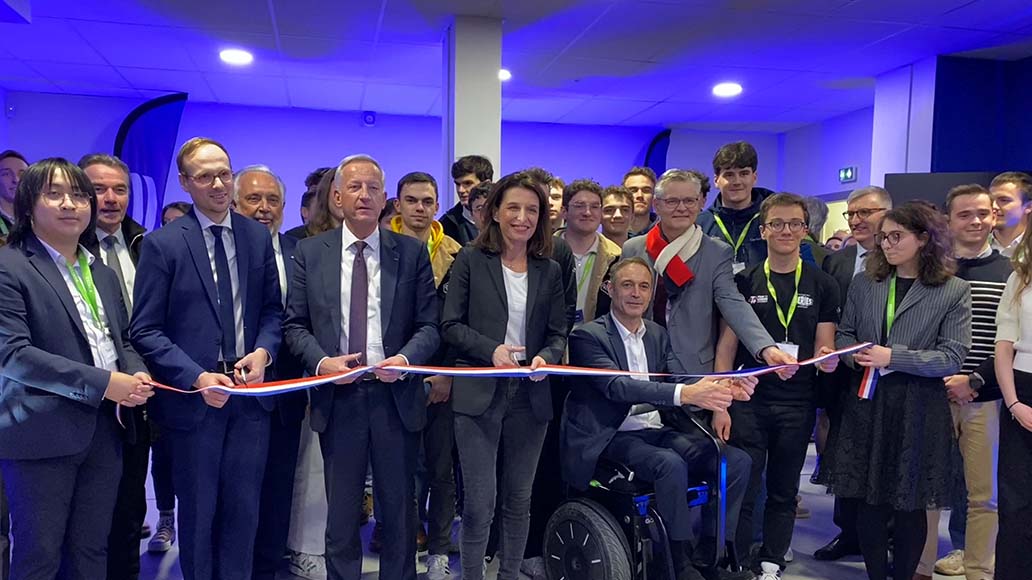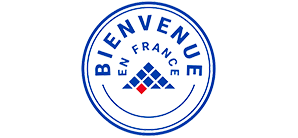Inauguration of the New Laval Building

The new Laval building was inaugurated on January 16. This is a second building devoted to training, research and innovation, enabling the school to double its surface area to 12,000 m² and offer capacity for 1,000 students.
A modern, environmentally friendly 6,500 m² extension
The new building includes 3,900 m2 devoted to teaching. It includes new, more spacious classrooms and practical work areas, group work areas for projects, a learning center with modular spaces, specific rooms for each transport sector, an educational Fablab and a room equipped with simulators.
The two old amphitheaters have been renovated and merged. It can now accommodate up to 230 people for conferences and round tables, which will be more widely open to local players. At the same time, la Pépinière, the premises for associative activities, located a 10-minute walk from ESTACA, is available to student associations 24/7.
Particular attention was paid to the environmental footprint of the building and to optimizing the new campus to meet the school’s sustainable development policy: preserved natural spaces, more efficient building energy, a heat pump and a white roof, and encouragement of soft mobility.
Both buildings were designed by the Nantes-based architects Rocheteau-Saillard and are inspired by the school’s disciplines. They emphasize the mobility of the future, suggesting the rotation of engines and aerodynamic bodies, while combining a range of materials such as wood, stainless steel and aluminum.
New training courses and expanded research laboratories
Students in the engineering program can follow all the school’s courses: aeronautics, automotive, rail, aerospace and shipping, over the first two years of the program at Laval. For the engineering cycle (from 3rd year onwards), the Laval campus offers aeronautics, automotive and shipping, while students wishing to follow other options are welcomed at the Bordeaux or Saint Quentin en Yvelines sites.
This year, the campus is also welcoming 22 students from the Mastère Spécialisé® Motorsport Engineering Performance program. This is offered by ESTACA in partnership with the Fédération Française de Sport Automobile (FFSA). It meets the need for qualified engineers specially prepared to work in competitive motor sports. Students are trained in the design, optimization and organization of all technical solutions used in the field of motor racing.
In September 2025, ESTACA will open an apprenticeship-based engineering program in Laval with the ISAE group (Institut Supérieur de l’Aéronautique et de l’Espace) “Industrial engineering for aeronautics and aerospace” (currently being approved by the Commission des Titres d’Ingénieur).
The new building also devotes 2,600m² to research and innovation. It boasts new research platforms, including an intelligent mobility room, drone platforms, rooms for soft mobility, electric propulsion systems, virtual reality, prototyping and more. The ESTACA’LAB research center works to meet the challenges of tomorrow’s mobility. It is comprised of two scientific divisions: Energy and Embedded Systems for Transport (S2ET) and Mechanical and Environmental Research (MSCE), which work to improve air quality, composite structures, embedded systems, energy and control in the transport sector.
An inauguration with the partners who supported and funded the project
On Thursday January 16th, the partners who supported the extension project were all on hand to inaugurate the building. The cost of the infrastructure project was shared equally by the region of the Pays de la Loire, the Mayenne Department and Laval Agglomération. ESTACA contributed 1.5 million euros to the project. The support of alumni and companies, through the ESTACA Endowment Fund, also supported the investment.
At the inauguration, the partners reiterated their commitment to ESTACA.













